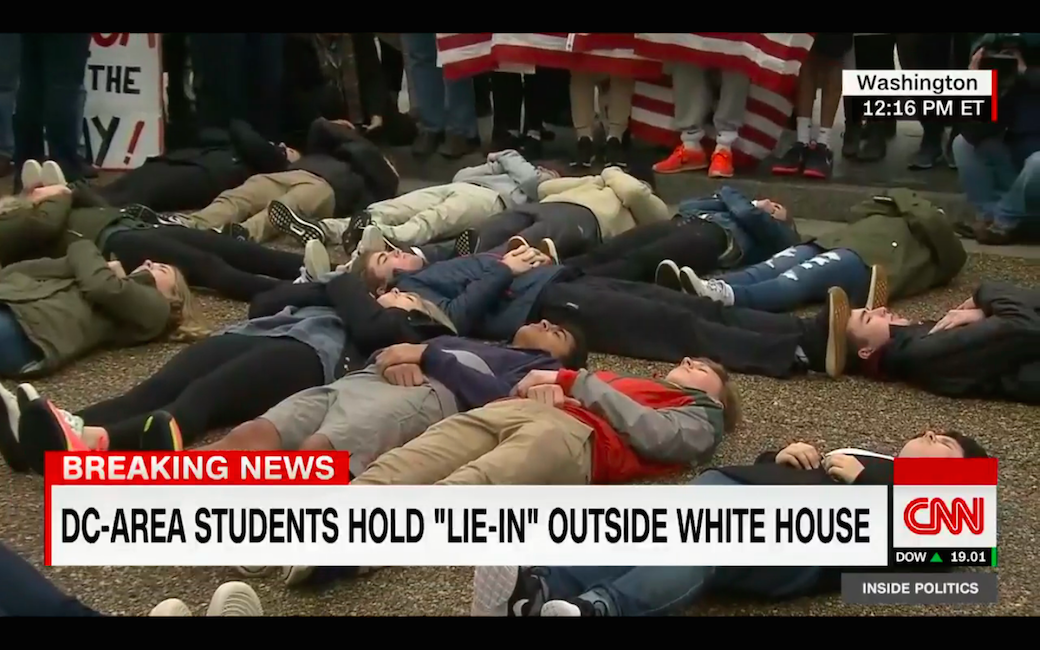I begin this post by first looking at what a protest is. Protests can be individualistic (where a single person is the protestor) or communal; they can be nonviolent or violent in nature; they can be public or private; and while most protests are political, a protest can be against a broad range of people or things including a governing body, a law, a celebrity, a prison, a film, and other political, professional, corporate, religious, or educational institutions. I tend to approach the meaning and understanding of different topics by first looking at context. For the sake of our work, I am looking at how protests are generally understood in the U.S. Because protest is so vast in our history, the definition of protest remains broad and takes on forms and variations that I have not explicitly outlined. In one example, it was a coalition of women who nearly 100 years ago protested the White House demanding that women be given the right to vote. Their protest consisted of nonviolent picketing. When they were arrested for their protest, they continued by staging a hunger strike. The prison guards then forced tubes down the nose and throats of these political prisoners. When the international community discovered these tactics deployed by the U.S. government, an embarrassed President urged Congress to pass a Constitutional Amendment. In another example, the U.S. witnessed “Bloody Sunday” in 1965. As black civil rights marchers walked across the Edmund Pettus Bridge in Selma, Alabama, to challenge the state’s tactics in preventing black voters from registering or exercising their right to vote, state troopers on horses unleashed tear gas on the crowd and violently used batons to strike the marchers. That year, the Voting Rights Act was passed.
I want to use the history above to help inspire and ground us as you consider what protest means to you and your organization. Protest is usually all about timing — the timing that triggered the protest and some sense of urgency for a resolution. Now consider the history and timing of your organization. Was it formed through an act of protest, or does it serve as a symbol of protest? We recognize that many organizations with varying mission statements have engaged in different forms of civil protest. And we further understand that not all nonprofits engage in protest. But as all organizations rely on the support of their followers and donors, all nonprofits should be prepared to engage with supporters who set a call-to-action for your organization. How will you respond when a supporter or donor invites you to participate in a cause that they have identified to be in line with your mission? While you may not always have an action plan for your next protest, it is helpful to have a general sense of where your organization stands on various issues that intersect with your mission. If you are in a position of management, it is also helpful to designate some time to review the organization’s stance with your staff. If the opportunity presents itself where action and protest are called for, you’ll be that much more prepared. Know that just because your organization has not engaged in protest in the past, does not prevent you from participating in a form of protest in the future. In fact, protest can help others learn more about your cause, especially if it is done in an organized manner that is inclusive and intersectional. In a future blog post, I’ll write down some general tips for effective community organizing.
How do past events and your organization’s mission correlate with recent events? As the discussion of gun control reemerges on a national platform given recent school shootings, protests have arisen all around the country calling for an increase in gun control laws including a ban on assault rifles and a more thorough vetting of applicants applying for gun permits. These protests have included marches in local communities, student walkouts from schools, and a “lie-in” in front of the White House by high school students. And, we are beginning to see steps toward legislative action seeking to limit how and when a protest can take place.
Consider for example that the Black Lives Matter movement has engaged in years of protest across the country to bring reform to the institutional racism that exists in the U.S. Some of their nonviolent tactics include blocking roads and highways. While some may be dismissive of black people using their bodies as literal road blocks, their strategy is rooted in history. It is a fact that black neighborhoods and families were destroyed as highway construction deliberately targeted black neighborhoods for demolition and construction. And yet legislatures are introducing bills to protect drivers who decide to deliberately run over a protester blocking the road. The country saw dozens of student walkouts when President Trump was elected. It is inspiring and moving to see so many young people recognizing that they too can use their voices and bodies to effect change. But again, people in positions of power seek to restrict protest when protest disrupts the status quo. As more and more students stage walkouts in the upcoming weeks until Congress implements gun control reform, a superintendent in Texas is threatening students with suspension for leaving school. These are the real consequences protesters face in modern U.S. society. Some are even blacklisted from meaningful employment (ex: Colin Kaepernick). And it becomes increasingly troublesome as new strategies are deployed to curb protest and dissent.
What can nonprofit organizations do? Continue to be vigilant in furthering your missions. Adapt to the evolving political climate and stay hopeful in the fact that upcoming elections can be an opportunity to elect new leaders who are committed to your ideas and philosophies. Rally your followers and give them concrete steps for taking action. These steps are especially important if one of your members (a volunteer, staff person, board member, or other community ally) are targeted for their act of protest. If your organization has the financial means, help set bail for protesters who are jailed. Use your voice and brand to show up at town hall meetings and legislative hearings to challenge biased and unfair laws that target protest. By taking these steps, nonprofits can help ensure the safety of their constituents.
I hope that today’s blog post has given you greater context to better understand why acts of protest are so intrinsically tied to nonprofits. As more and more people engage in political action to protest acts of injustice, nonprofits should lend their support, as nonprofits only exist because of the support from their following.
Photo Credit: CNN

Adam (s/he, him) has a decade of nonprofit program experience working with immigrant and low-income communities. His areas of expertise range from refugee resettlement, legal advocacy, civil rights curriculum, LGBTQ organizing, and HIV education. Adam’s expertise lies in program development, implementation, and assessment. Adam is a foster parent and loves creating art. His small retail shop, The Garden Home, is a medium in which Adam can evolve and share his art.
